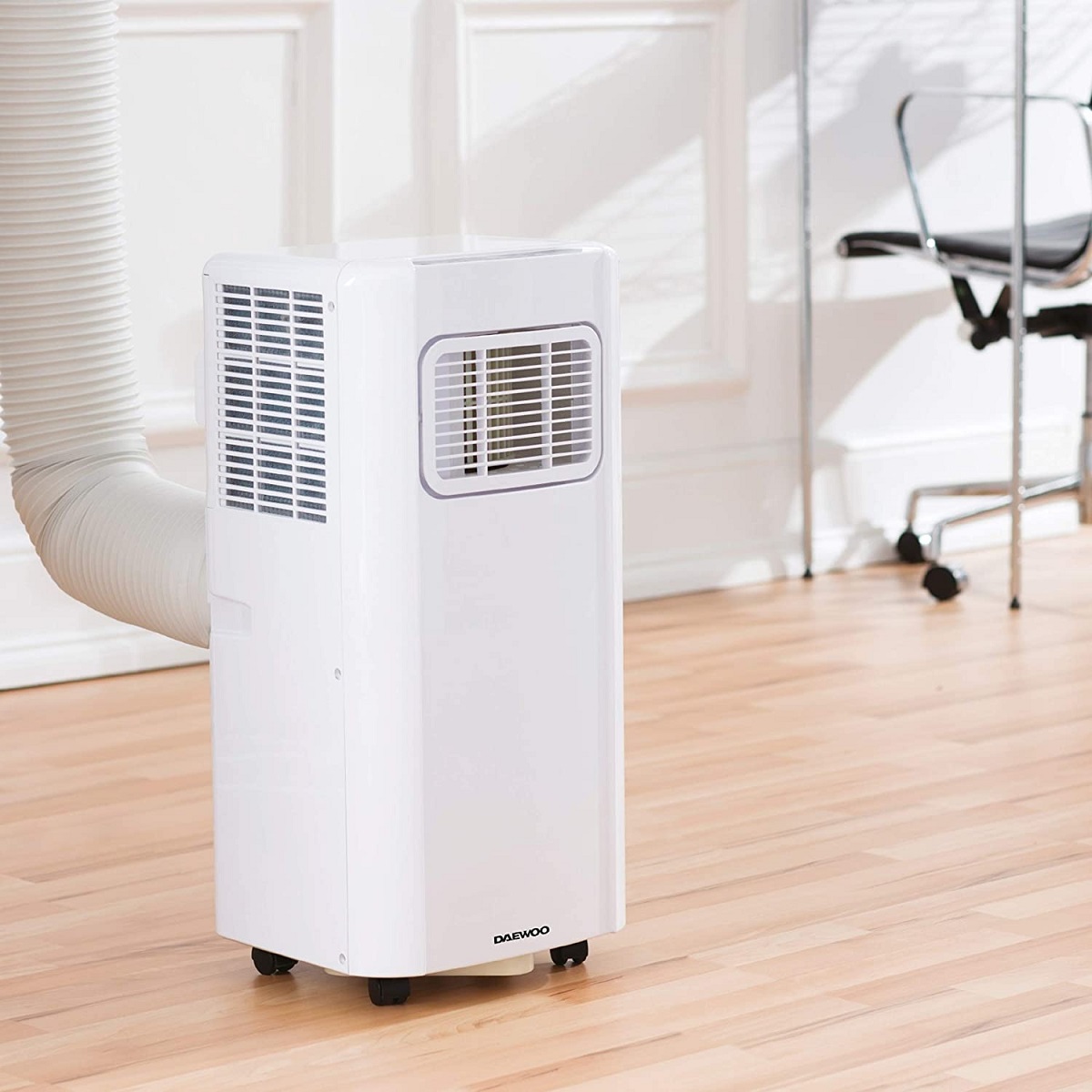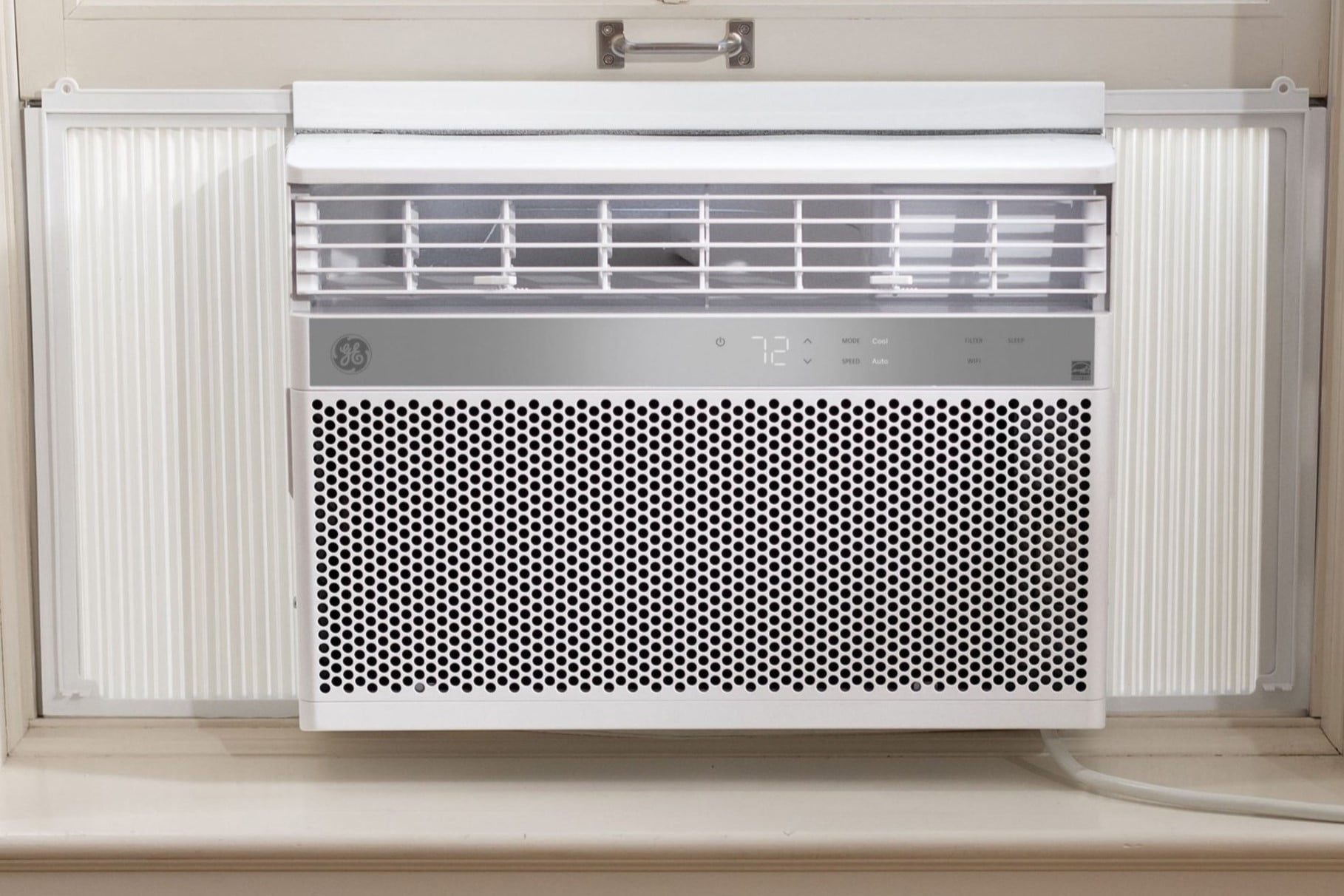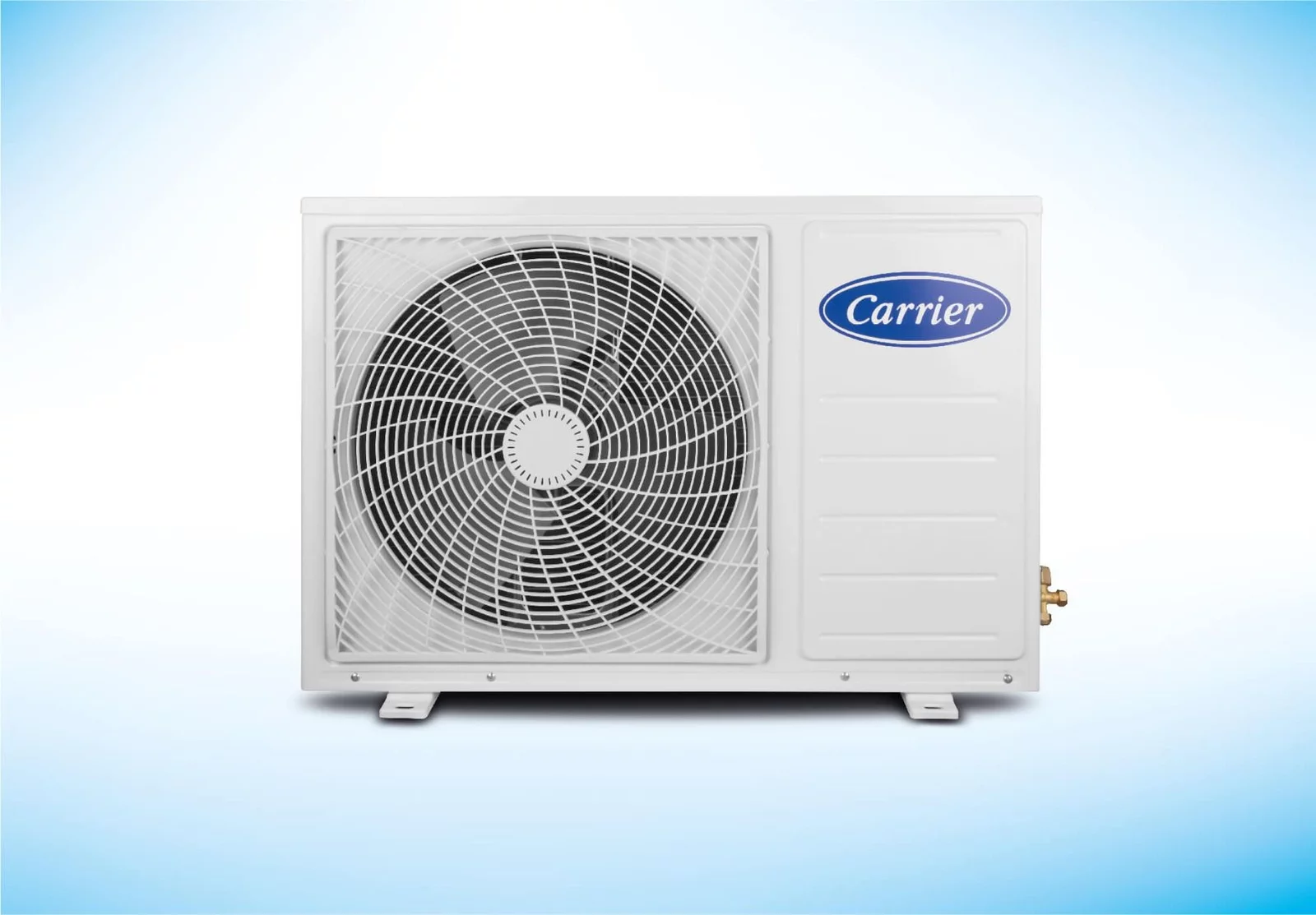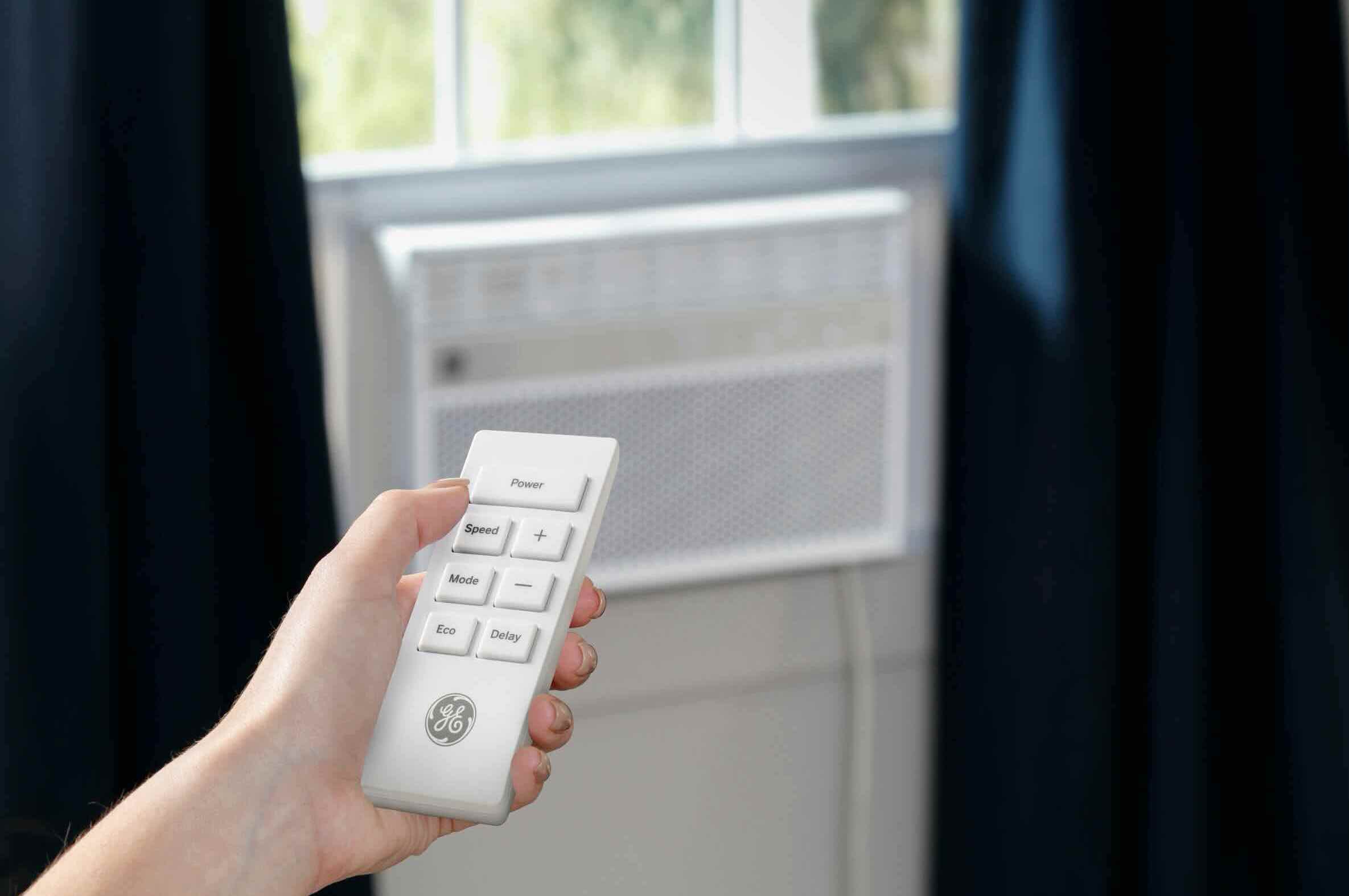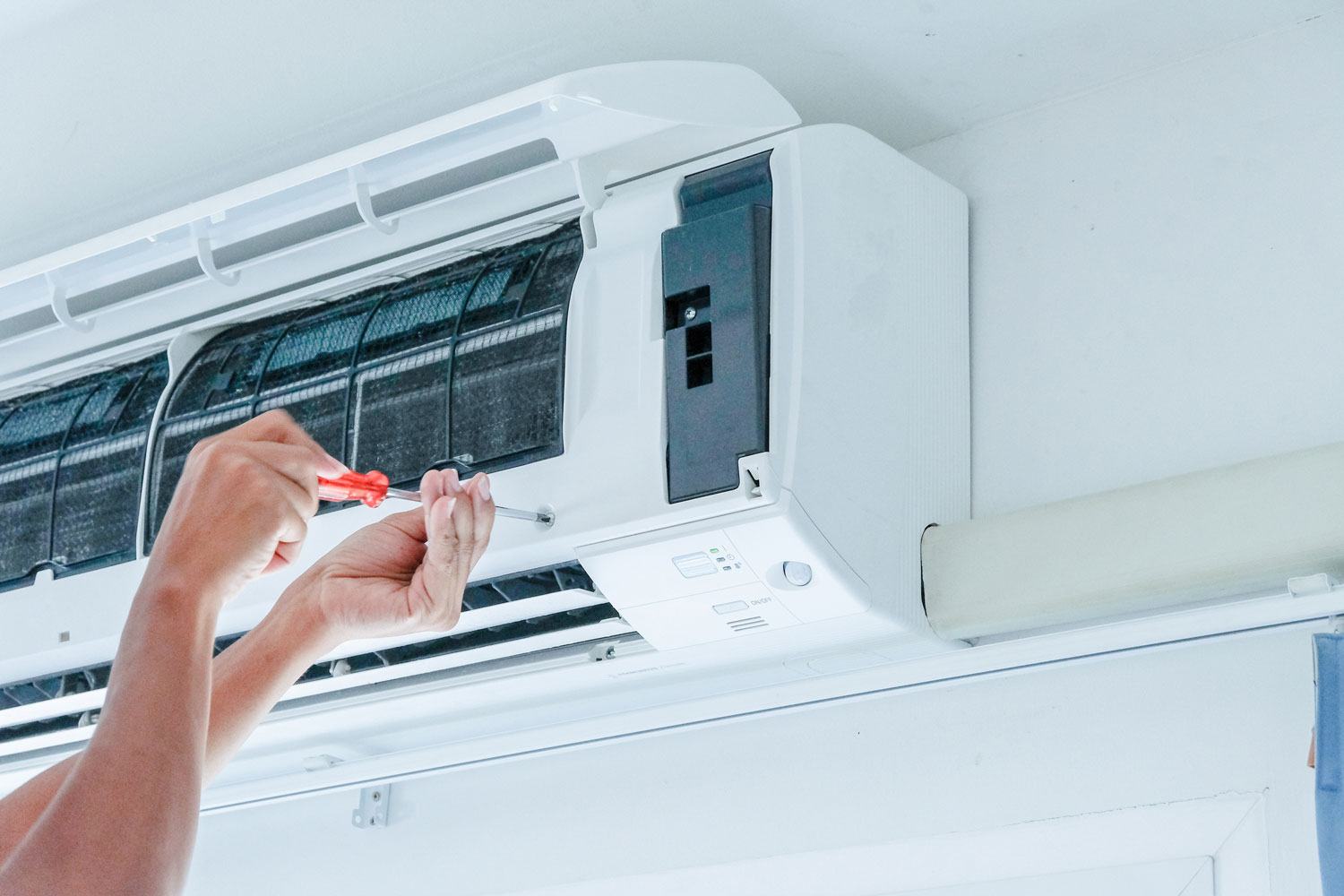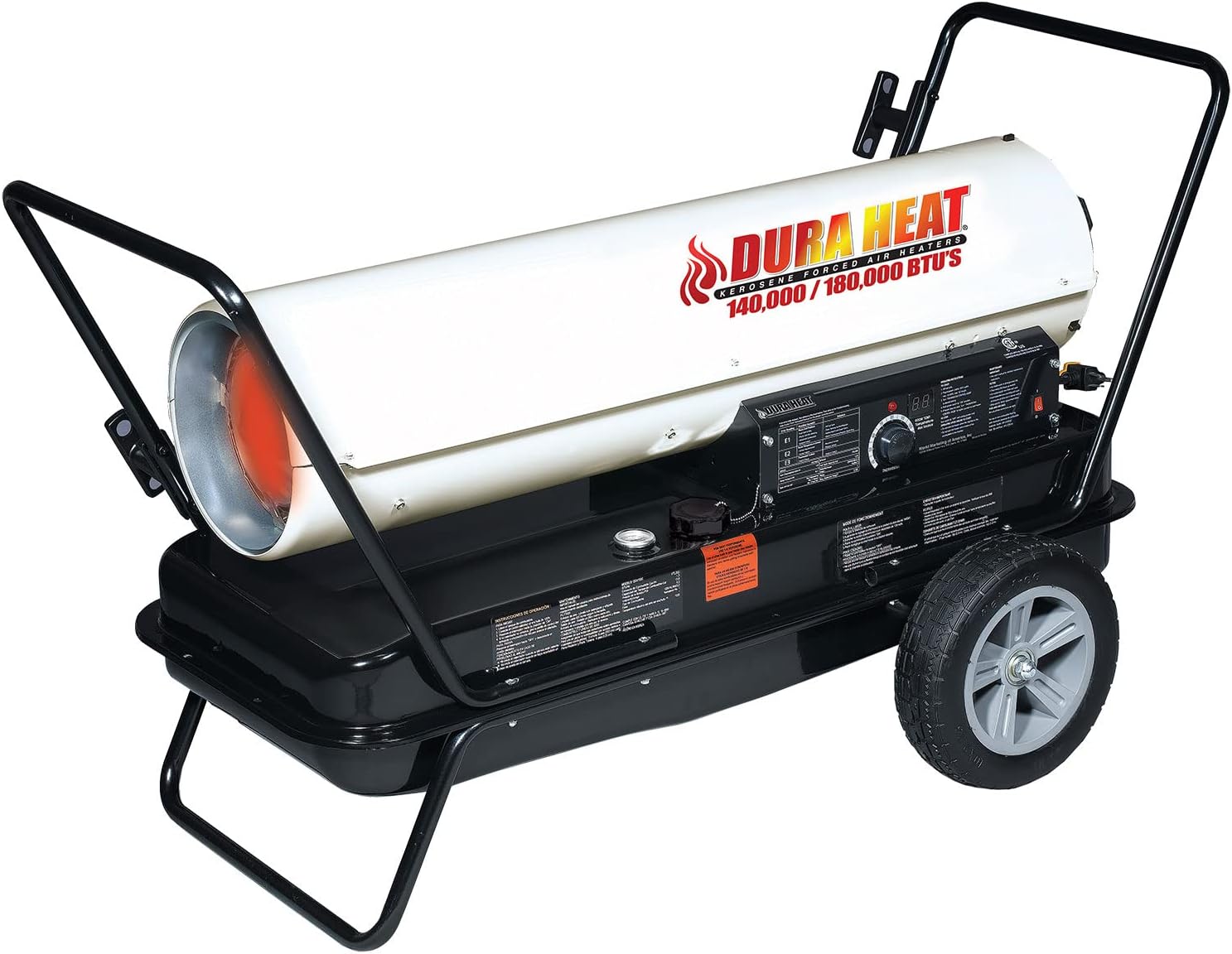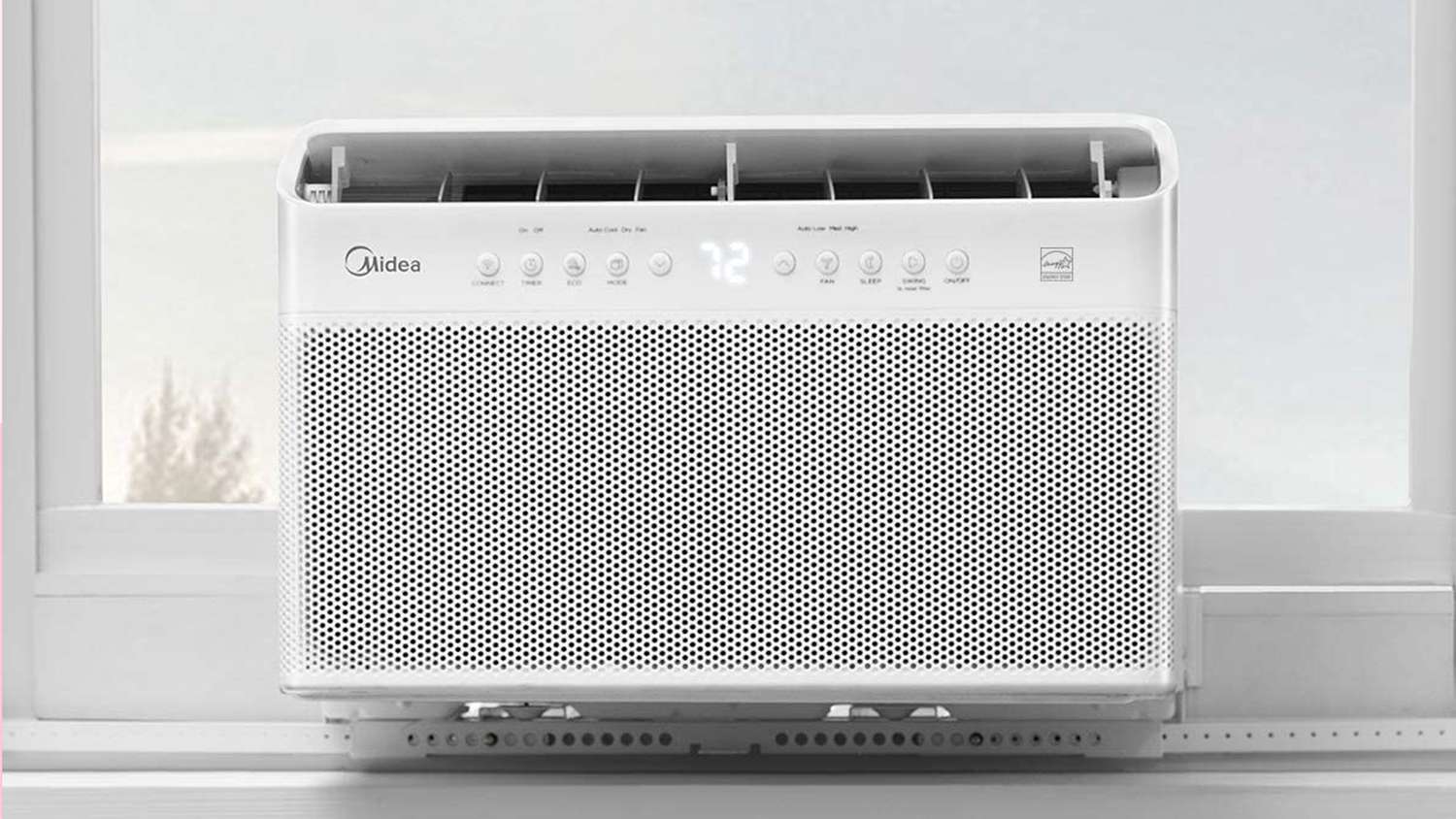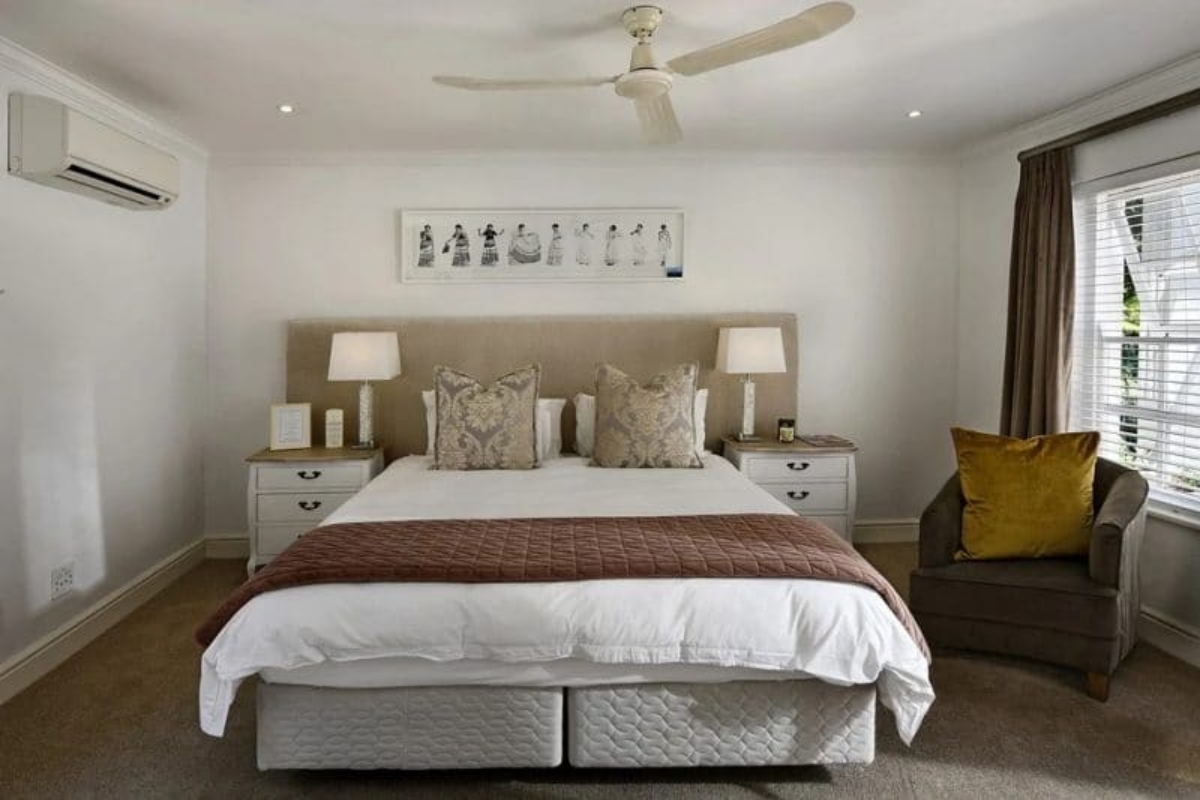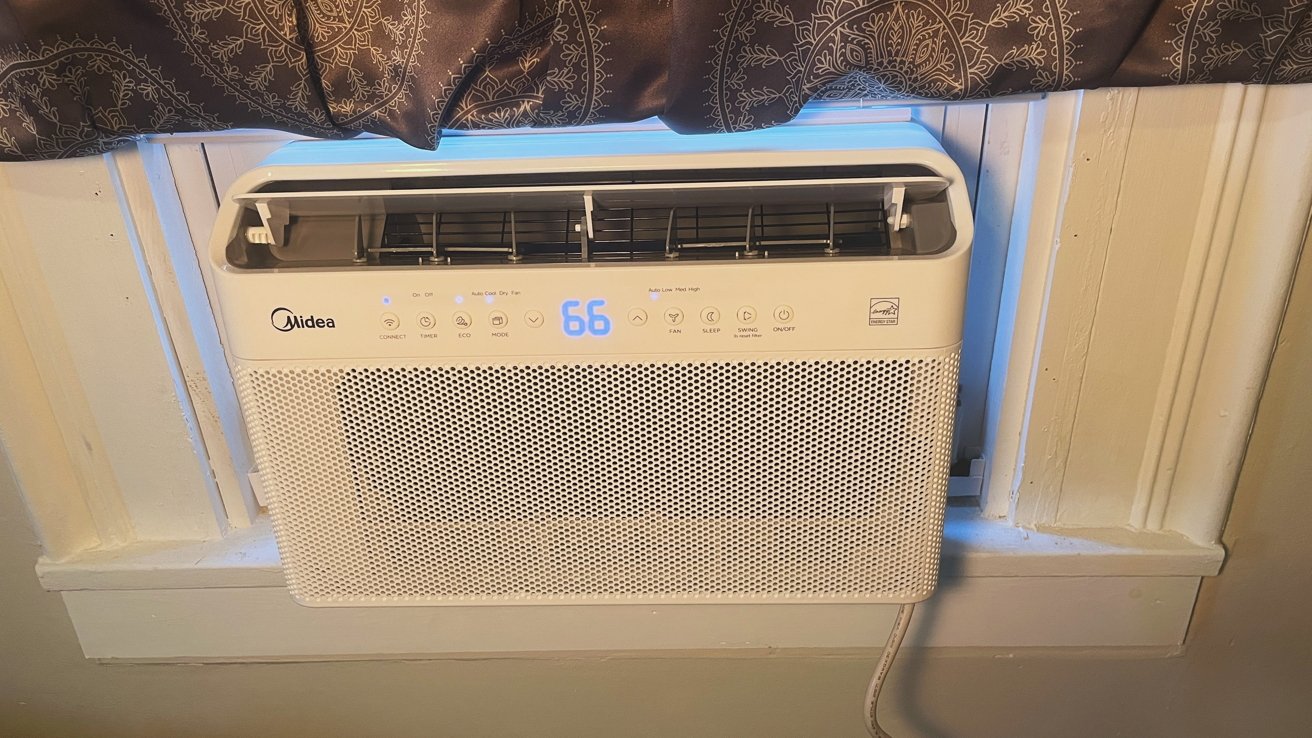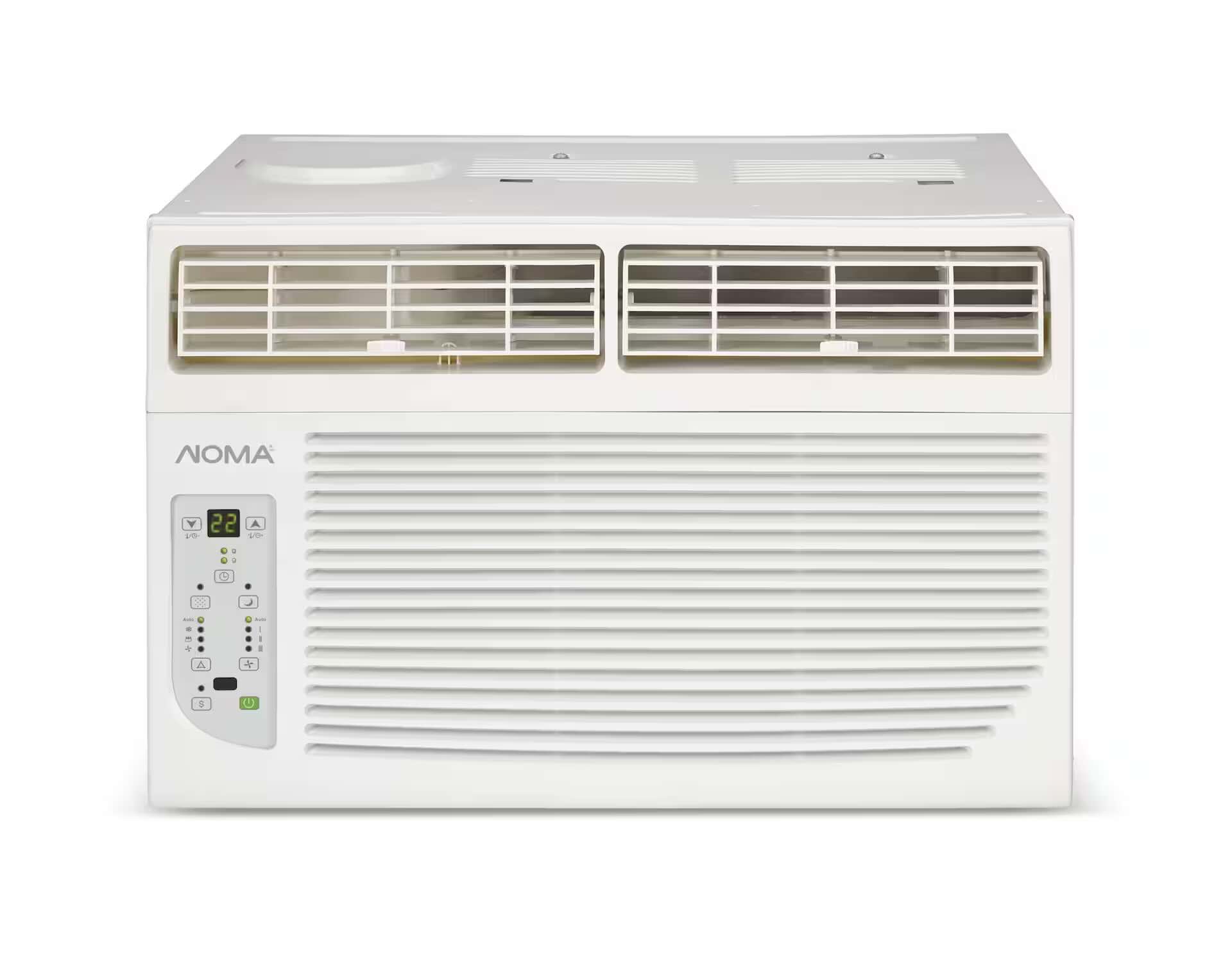Home>Home Maintenance>How Big Is A 5000 Btu Air Conditioner
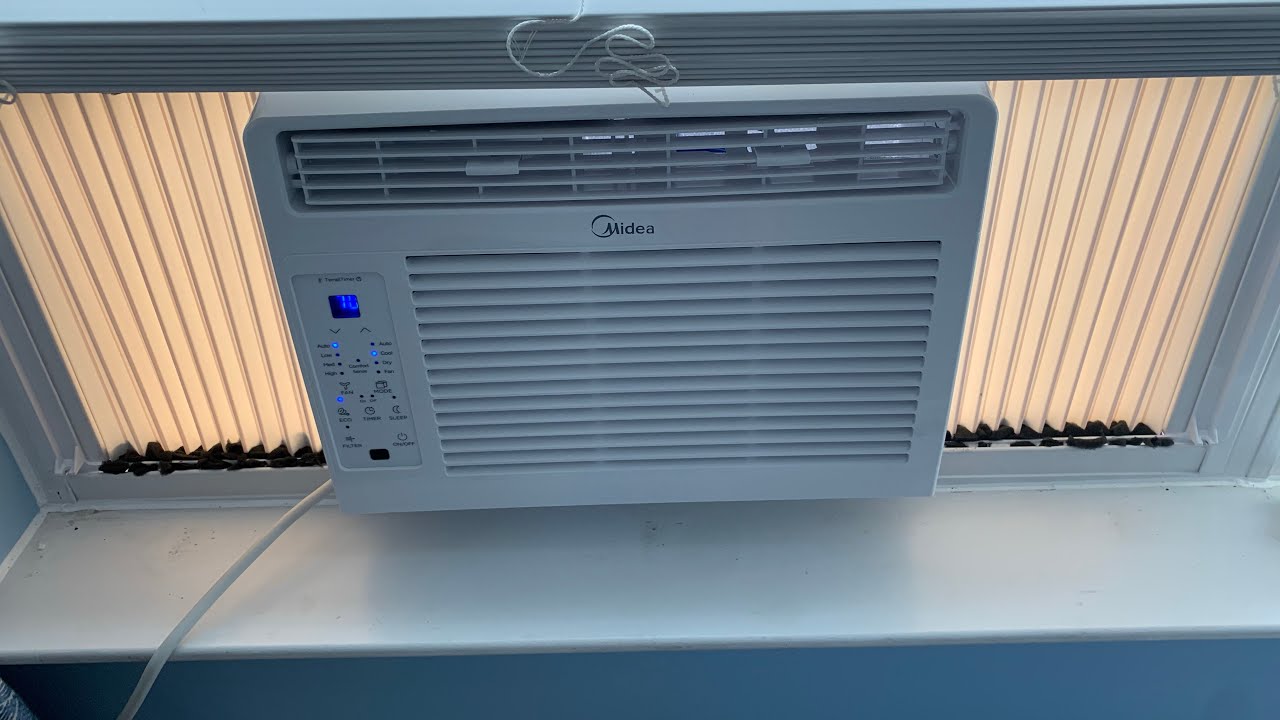

Home Maintenance
How Big Is A 5000 Btu Air Conditioner
Modified: September 1, 2024
Find out the exact size of a 5000 BTU air conditioner for your home maintenance needs. Discover the benefits and efficiency of this compact cooling solution.
(Many of the links in this article redirect to a specific reviewed product. Your purchase of these products through affiliate links helps to generate commission for Storables.com, at no extra cost. Learn more)
Introduction
Welcome to our guide on understanding the size and capabilities of a 5000 BTU air conditioner. When it comes to finding the right cooling solution for your space, it’s essential to have a clear understanding of BTUs and how they relate to air conditioning capacity. In this article, we’ll delve into the world of BTUs, explore the features of a 5000 BTU air conditioner, discuss its cooling capacity and suitability for different room sizes, examine its energy efficiency, and weigh the pros and cons. By the end, you’ll have a comprehensive understanding of what a 5000 BTU air conditioner can offer and be armed with the knowledge you need to make an informed purchasing decision.
Key Takeaways:
- A 5000 BTU air conditioner is best for small spaces like bedrooms and offices, providing affordable and portable cooling. Consider room size and energy efficiency when choosing the right unit for your needs.
- Understanding BTUs and the cooling capacity of a 5000 BTU air conditioner is essential for making an informed purchase. Consider factors like insulation, noise level, and additional features to find the perfect fit for your space.
Understanding BTU (British Thermal Units)
Before we dive into the specifics of a 5000 BTU air conditioner, let’s take a moment to understand what BTUs are and how they factor into air conditioning. BTU stands for British Thermal Unit, and it is a unit of measurement used to quantify thermal energy. In the context of air conditioning, BTUs are used to measure the cooling capacity of an air conditioner.
The basic concept is simple: the higher the BTU rating, the more cooling power the air conditioner has. This means that a higher BTU air conditioner can cool a larger area or cool a smaller area more quickly than a lower BTU unit. Understanding the importance of BTUs will help you determine the appropriate size of air conditioner for your specific needs.
It’s worth noting that BTUs can also be used to measure the heating capacity of a unit, but for the purpose of this article, we will focus solely on cooling BTUs.
Keep in mind that other factors such as insulation, room layout, and climate can affect the cooling performance of an air conditioner. While BTUs provide a useful guideline, it’s always a good idea to consult with an HVAC professional to ensure you choose the right size air conditioner for your space.
What Is a 5000 BTU Air Conditioner?
A 5000 BTU air conditioner refers to an air conditioning unit with a cooling capacity of 5000 BTUs. It is considered a compact, portable air conditioner that is suitable for small spaces such as bedrooms, small offices, or dorm rooms.
These types of air conditioners are designed to provide efficient cooling for areas ranging from 100 to 150 square feet. They come in a variety of forms, including window units, portable units, and through-the-wall units, allowing you to choose the best option based on your needs and available installation options.
A 5000 BTU air conditioner is typically equipped with adjustable temperature settings, fan speeds, and various operating modes to provide customized comfort. Some units may also have additional features such as remote control, programmable timers, and sleep mode for added convenience.
These air conditioners are designed to be user-friendly and easy to install. Window units can be installed in a compatible window frame, while portable units can be placed anywhere in the room and vented through a window or a designated exhaust port. Through-the-wall units require a professional installation for proper placement.
It’s important to keep in mind that a 5000 BTU air conditioner may not be suitable for larger spaces or areas with high heat loads. To ensure optimal cooling performance and energy efficiency, it’s crucial to choose an air conditioner that matches the size of the room you wish to cool.
Cooling Capacity of a 5000 BTU Air Conditioner
The cooling capacity of a 5000 BTU air conditioner refers to its ability to remove heat from a space and lower the temperature. Generally, a 5000 BTU air conditioner is capable of cooling areas ranging from 100 to 150 square feet effectively.
It’s important to note that cooling capacity is influenced by various factors such as insulation, ceiling height, and the number of windows in the room. These factors can affect the cooling efficiency and may require you to adjust the BTU calculation accordingly.
Typically, a rule of thumb for calculating the cooling capacity required is to allocate 20 BTUs per square foot of space. For example, if your room is 100 square feet, a 5000 BTU air conditioner would be a suitable choice. However, if your room is exposed to excessive sunlight or has poor insulation, you may need to opt for a higher BTU unit to compensate for the extra heat load.
The cooling efficiency of a 5000 BTU air conditioner can vary based on the model and energy-saving features it offers. Some units may have multiple cooling modes, such as Eco or Sleep mode, which can help optimize energy consumption and provide efficient cooling while reducing electricity bills.
When using a 5000 BTU air conditioner, it’s advisable to close doors and windows in the room to prevent the cool air from escaping and to avoid introducing warm air from outside. Additionally, using curtains or blinds to block out direct sunlight can help improve cooling efficiency.
For larger spaces or rooms with higher heat loads, it may be necessary to consider a higher BTU air conditioner or use multiple units to achieve the desired cooling effect. Consulting with an HVAC professional can help determine the ideal cooling capacity for your specific requirements.
Suitable Room Size for a 5000 BTU Air Conditioner
A 5000 BTU air conditioner is designed to cool small rooms or spaces that range from 100 to 150 square feet. This makes it ideal for bedrooms, small offices, dorm rooms, or even studio apartments.
When determining the suitable room size for a 5000 BTU air conditioner, it’s important to consider factors such as insulation, ceiling height, and the number of windows. These factors can affect the cooling efficiency and may require adjustments to the BTU calculation.
As a general guideline, the rule of thumb is to allocate 20 BTUs per square foot of space. With a 5000 BTU air conditioner, you can effectively cool a room that is approximately 100 to 150 square feet in size. However, it’s essential to be mindful of any additional heat sources or factors that may affect the cooling load of the room.
If the room is exposed to direct sunlight for extended periods or has poor insulation, it may require a higher BTU air conditioner to compensate for the increased heat load. Similarly, if the ceiling height is higher than average or if there are multiple windows in the room, it may be necessary to consider a higher capacity unit.
It’s worth noting that while a 5000 BTU air conditioner may cool a larger room to some extent, it may not be able to efficiently maintain lower temperatures or remove excess humidity in larger spaces. In such cases, a higher BTU air conditioner or multiple units may be necessary to achieve the desired cooling effect.
Consulting with an HVAC professional can help you determine the appropriate cooling capacity based on your specific room size, location, and any unique features that may impact cooling efficiency. Their expertise will ensure that you choose the right air conditioner to keep your space cool and comfortable.
Energy Efficiency of a 5000 BTU Air Conditioner
When considering a 5000 BTU air conditioner, it’s important to assess its energy efficiency to determine how it will impact your energy consumption and electricity bills. Energy-efficient air conditioners not only help reduce your carbon footprint but also save you money in the long run.
Energy efficiency of an air conditioner is measured by its Energy Efficiency Ratio (EER) or Seasonal Energy Efficiency Ratio (SEER). The higher the EER or SEER rating, the more efficient the air conditioner is in converting electricity into cooling power.
A 5000 BTU air conditioner may have varying EER or SEER ratings depending on the model and manufacturer. It’s advisable to look for units with higher ratings to ensure optimal energy efficiency.
In addition to the EER or SEER rating, some air conditioners come with energy-saving features such as programmable timers, sleep mode, or eco-friendly settings. These features allow you to customize the cooling operation and maximize energy efficiency.
To further improve energy efficiency, consider proper installation and maintenance. Ensuring that the unit is properly sized and sealed, and that its air filters are regularly cleaned or replaced, can help optimize cooling performance and reduce power consumption.
Additionally, using the air conditioner in conjunction with other strategies, such as proper insulation, sealing leaks, and using ceiling fans or portable fans to circulate the cool air, can help enhance energy efficiency and reduce the workload on the air conditioner.
It’s important to note that while an energy-efficient air conditioner can help reduce energy consumption, it does not guarantee low energy bills if used improperly or in inefficient spaces. Choosing the right size air conditioner for your room, practicing energy-saving habits, and considering the overall energy efficiency of your home are key factors in achieving energy savings.
Always look for the ENERGY STAR® label when purchasing an air conditioner, as these models meet strict energy efficiency standards set by the Environmental Protection Agency (EPA). They are designed to provide significant energy savings while delivering optimal cooling performance.
Pros and Cons of a 5000 BTU Air Conditioner
A 5000 BTU air conditioner has its advantages and disadvantages. Understanding the pros and cons will help you make an informed decision about whether it’s the right cooling solution for your needs.
Pros:
- Compact Size: A 5000 BTU air conditioner is typically small and compact, making it ideal for smaller spaces such as bedrooms, small offices, or dorm rooms.
- Easy Installation: These air conditioners are designed for easy installation, with options like window units that can be easily mounted or portable units that can be placed anywhere in the room.
- Energy Efficiency: With advancements in technology, many 5000 BTU air conditioners are energy-efficient and come with features like programmable timers and sleep mode, helping to reduce energy consumption and save on electricity bills.
- Affordability: Compared to larger air conditioning units, a 5000 BTU air conditioner is generally more affordable, making it an attractive option for those on a budget.
- Portability: Portable 5000 BTU air conditioners offer the flexibility to move the unit to different rooms or areas, providing cooling where it’s needed most.
Cons:
- Limited Cooling Capacity: Due to its smaller size, a 5000 BTU air conditioner may not effectively cool larger rooms or areas with high heat loads. It’s important to consider the square footage and heat-generating factors of the space before making a purchase.
- Noise Level: Some 5000 BTU air conditioners may produce more noise compared to larger units, which can be a disadvantage for those who prefer a quieter environment.
- Limited Features: While many 5000 BTU air conditioners offer basic features like adjustable temperature settings and fan speeds, they may lack advanced features found in larger, more expensive models.
- Single-Room Cooling: A 5000 BTU air conditioner is designed to cool a single room or small area, so it may not be suitable for those looking to cool an entire home or multiple rooms simultaneously.
It’s important to consider your specific cooling needs, the size of the space, and any unique requirements before deciding if a 5000 BTU air conditioner is the right choice for you. Evaluating the pros and cons will help you determine if it aligns with your preferences and budget.
Important Considerations Before Buying a 5000 BTU Air Conditioner
Before purchasing a 5000 BTU air conditioner, there are several factors to consider to ensure you make the right choice for your cooling needs. Taking the time to evaluate these considerations will help you find a unit that provides optimal comfort and suits your specific requirements.
Room Size and Heat Load:
First and foremost, consider the size of the room you plan to cool. A 5000 BTU air conditioner is suitable for rooms ranging from 100 to 150 square feet. However, take into account additional factors like insulation, ceiling height, and the number of windows, as these can affect the cooling load and may require adjustments to the BTU calculation.
Energy Efficiency:
Look for energy-efficient models with high Energy Efficiency Ratio (EER) or Seasonal Energy Efficiency Ratio (SEER) ratings. These ratings indicate how efficiently the air conditioner converts electricity into cooling power. Energy-efficient units can help reduce energy consumption and lower your electricity bills in the long run.
Installation Options:
Determine which installation option best suits your needs and available space. Window units are installed in compatible window frames, while portable units can be placed anywhere in the room. Through-the-wall units require professional installation for proper placement. Choose the installation option that aligns with your preferences and constraints.
Noise Level:
Consider the noise level of the air conditioner. While noise preferences may vary, some units may produce more noise than others. Look for models with lower dB (decibel) ratings if a quieter environment is essential to you.
Additional Features:
Review the features offered by the air conditioner. Consider features such as adjustable temperature settings, fan speeds, timers, sleep mode, and remote control for convenience and customization. Some units may also have advanced features like air purifying filters or smart compatibility.
Budget:
Set a budget for your air conditioner purchase. While a 5000 BTU air conditioner is generally more affordable compared to larger units, consider the long-term costs, including maintenance, operation, and energy consumption, to ensure it fits within your budget.
Reviews and Recommendations:
Read customer reviews and seek recommendations from reliable sources. Feedback from other users can provide valuable insights into the performance, reliability, and overall satisfaction with a particular model or brand.
By considering these important factors, you can make an informed decision and choose a 5000 BTU air conditioner that meets your cooling needs, energy efficiency goals, and budgetary constraints. Remember to consult with an HVAC professional for personalized recommendations and guidance based on your specific requirements.
Conclusion
In conclusion, a 5000 BTU air conditioner is a compact and portable cooling solution suitable for small spaces such as bedrooms, small offices, dorm rooms, or studio apartments. Understanding the BTU measurement and its relationship to cooling capacity is crucial in determining if a 5000 BTU air conditioner is the right choice for your needs.
When selecting a 5000 BTU air conditioner, carefully consider factors such as room size, insulation, ceiling height, and the number of windows to ensure it can effectively cool your space. Additionally, pay attention to the energy efficiency of the unit and look for features that optimize cooling performance while reducing energy consumption.
It’s important to weigh the pros and cons of a 5000 BTU air conditioner. While it offers benefits such as affordability, portability, and ease of installation, it may have limitations in terms of cooling capacity, noise level, and available features.
Before making a purchase, take into account important considerations such as installation options, noise level preferences, additional features, and your budget. Reading reviews and seeking recommendations from trusted sources can also provide valuable insights to help you make an informed decision.
In the end, finding the right 5000 BTU air conditioner entails considering your specific cooling needs, evaluating the suitability based on the room size and heat load, and ensuring energy efficiency to optimize comfort and minimize operating costs. Consulting with an HVAC professional can provide personalized advice and guidance to help you make the best choice for your cooling requirements.
By taking these factors into account, you can confidently choose a 5000 BTU air conditioner that will keep your space cool and comfortable during the hot summer months, providing a refreshing environment for you to relax, work, or sleep in.
Frequently Asked Questions about How Big Is A 5000 Btu Air Conditioner
Was this page helpful?
At Storables.com, we guarantee accurate and reliable information. Our content, validated by Expert Board Contributors, is crafted following stringent Editorial Policies. We're committed to providing you with well-researched, expert-backed insights for all your informational needs.
